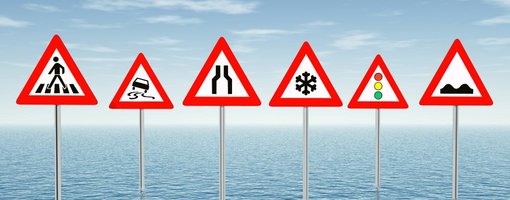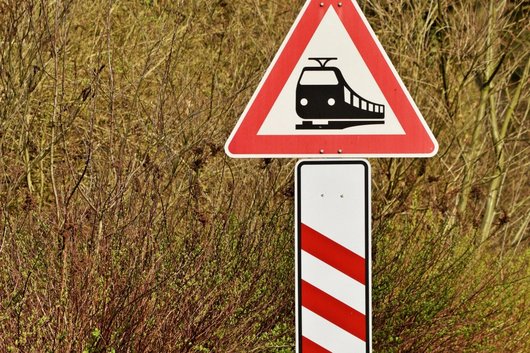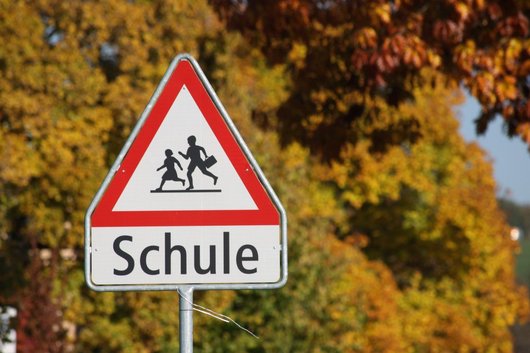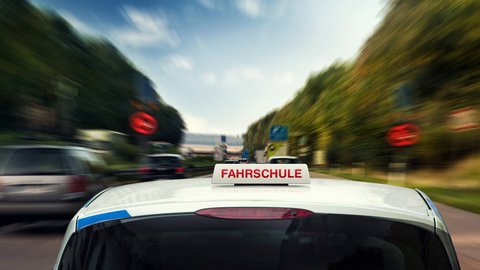Danger signs
That's good to know
Hazard signs are usually triangles with their tips pointing upwards. They have a wide red border and show the danger the driver must expect by means of various symbols in the middle. Obvious examples are the snowflake in hazard sign no. 113, which warns of slippery snow or ice, or the sign " Deer Crossing", which with a jumping deer in the middle alerts the driver that deer or roe deer could cross the road.
- Hazard signs warn for increased attention, in particular to reduce speed in view of a hazardous situation.
- Outside built-up areas, they generally stand 150 to 250 m in front of the danger points.
- Within built-up areas, they are generally close to the point of operation.
- An additional symbol can indicate the length of the dangerous distance.
- If a danger sign is placed in front of an intersection, a black arrow on an additional sign points in the direction of the danger point, if this is in the other road.

Significance
Hazard signs differ from mandatory signs or prohibition signs in that they do not contain a strict arrangement. They alert the driver to a danger. Their purpose is to make traffic safer.
What am I supposed to do?
Danger signs can indicate a danger at an early stage so that you, the driver, can adapt your behaviour to the traffic situation or check whether, for example, you should reduce your speed or keep a greater distance from the person in front.
![[Translate to English:] © bluedesign / stock.adobe.com Hazard signs indicate a danger to the driver.](/fileadmin/_processed_/1/3/csm_Gefahrenzeichen-Achtung-Unfall-AdobeStock-38842258_3b2a473ccb.png)
![[Translate to English:] © Björn Wylezich / stock.adobe.com Hazard signs indicate a danger to the driver.](/fileadmin/_processed_/4/8/csm_Achtung-Schleudergefahr-Gefahrenzeichen-AdobeStock-119285804_f9e916923a.png)
Fines for non-compliance
Since danger signs are usually a warning and not a strict ban in the strict sense, a fine only has to be paid in exceptional cases. It is possible, however, that in the event of an accident, failure to consider the question "Who is to blame?
Special danger signs
Before level crossings
Before a level crossing, the danger sign "level crossing" will tell you to be alert and adjust your speed. You can tell how far you are from the level crossing by the white beacons with red stripes:
- The three-stripe beacon stands about 240m before the level crossing.
- The two stripe beacon stands about 160m in front of the level crossing.
- About 80m before the level crossing there is a one-striped beacon.

Supplementary panels
Additional signs supplement the information on the road signs to which they are attached. These can be information about the danger point, but also about the distance or when the danger is to be expected.
For example: Outside built-up areas, danger signs generally stand 150m to 250m in front of the danger point. If the distance is considerably shorter, an additional sign will indicate this to you.
Additional characters are usually rectangular, with black symbols on a white background.


Find your driving school
You want to know more and get behind the wheel as quickly as possible? Then discover now in our search your driving school, which prepares you both theoretically and practically exactly according to your needs for your driving licence.